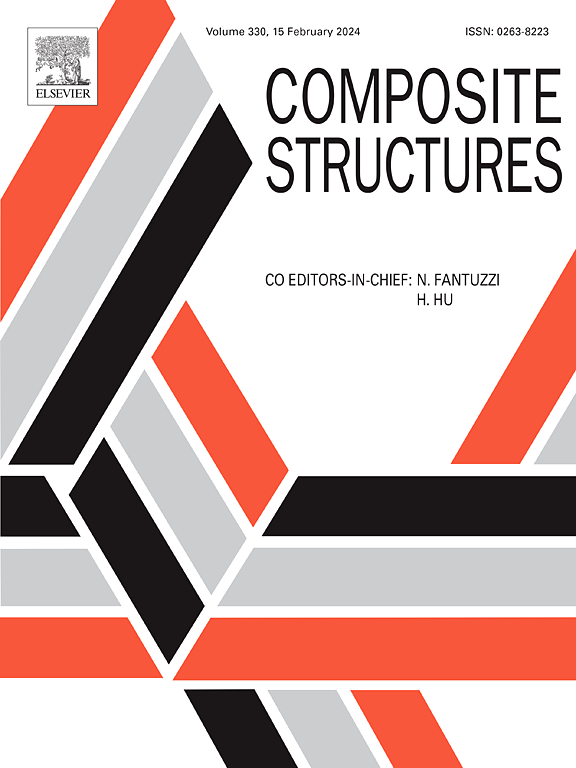Field-based pre-analysis and optimization for manufacturing feasibility of automated fiber placement path planning
IF 6.3
2区 材料科学
Q1 MATERIALS SCIENCE, COMPOSITES
引用次数: 0
Abstract
With the advent of automated fiber placement (AFP) machines, curvilinear tow paths are more prevalent within complex laying surfaces. However, the tow-steered pattern poses a challenge to the manufacturing process, easily causing manufacturing defects such as fiber wrinkle and gap/overlap. Therefore, it is necessary to analyze and improve the laying feasibility of the designed structure. This work applies the circulation and divergence of the orthogonal vector field to conduct a pre-analysis of the manufacturing performance (path parallelism and steering radius) of the designed fiber directions represented by angle parameterization, and provides a numerical solution for triangle mesh. In addition, path breakpoints associated with triangular gaps are considered as singularities in vector field, and their distribution probability is predicted with vector circulation. The validity of key metrics has been verified through typical ply surfaces. These analytical metrics facilitates a reasonable assessment of the manufacturability of the design site prior to actual placement, reducing manufacturing challenges. Their applications are explored in guidelines selection and breakpoint editing. Finally, an efficient smoothing optimization with complex form is proposed to enhance manufacturability of the design field. The experiments show that these metrics and optimization are suitable for complex open and rotating surfaces.
求助全文
约1分钟内获得全文
求助全文
来源期刊

Composite Structures
工程技术-材料科学:复合
CiteScore
12.00
自引率
12.70%
发文量
1246
审稿时长
78 days
期刊介绍:
The past few decades have seen outstanding advances in the use of composite materials in structural applications. There can be little doubt that, within engineering circles, composites have revolutionised traditional design concepts and made possible an unparalleled range of new and exciting possibilities as viable materials for construction. Composite Structures, an International Journal, disseminates knowledge between users, manufacturers, designers and researchers involved in structures or structural components manufactured using composite materials.
The journal publishes papers which contribute to knowledge in the use of composite materials in engineering structures. Papers deal with design, research and development studies, experimental investigations, theoretical analysis and fabrication techniques relevant to the application of composites in load-bearing components for assemblies, ranging from individual components such as plates and shells to complete composite structures.
 求助内容:
求助内容: 应助结果提醒方式:
应助结果提醒方式:


